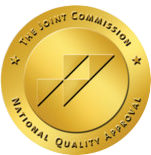By Dr. David Fedor
I was a fellow when I did my first proning procedure. We assigned roles, we looked after the lines, tubes, and drains, we discussed proper communications, and then we flipped the patient.
Unfortunately, my attending hadn’t prepared me for what can sometimes happen next. He had assumed, based on my knowledge of physiology, that I would already know.
Proning via teleICU
Avoiding gaps in communication is one of the first lessons I learned about coaching others to do proning procedures. Since graduating fellowship, I’ve led hundreds of proning procedures in-person.
As a teleICU physician during the COVID-19 pandemic, I’ve now also led half a dozen remotely. And my fellow Access TeleCare teleICU physicians have led many more. We’ve developed protocols for the procedure to provide knowledge, confidence, and assurance to remote care teams.
A lot of people assume that proning via teleICU can’t be done. Yet, just as I don’t lay hands on the patient while running a code, I don’t need to lay hands on the patient to guide a proning procedure. Anything I can do without touching the patient in person, I can also do remotely through a video camera.
Why prone patients?
COVID-19 has brought proning into the mainstream. But it wasn’t so long ago that many care teams still didn’t recognize the importance of prone positioning for patients with acute respiratory distress syndrome (ARDS), despite the fact that it’s been around at least since the mid-1970s.
Multiple studies and meta-analyses have confirmed its usefulness for lowering mortality among ARDS patients. But when COVID-19 hit, many care teams around the country remained nervous about the procedure, and rightly so. Plenty can go wrong if you’re not careful about it.
The reason proning works, however, is because of the way the lung is shaped. There is more surface area on the part of the lung facing your back and less surface area pointed toward your chest. So if you are lying on your back, that area is compressed and not as available for oxygen exchange. If there is fluid in your lungs, as there often is with such patients, that area is also covered in fluid. It can also be compressed by fluid (and by gravity).
When you flip the patient onto their chest, it exposes the lung’s larger surface area and drains it of fluid, allowing better oxygenation.
The only caveat? The liquid doesn’t drain instantaneously (and the lung takes some time to re-expand.) Just as when you flip an hourglass, it takes time for the fluid to leave the lung’s back-facing surface and drain to the bottom. That’s why patients’ oxygen can actually decrease for a short time after proning.
(There are other physiologic reasons for the effectiveness of proning, but I want to keep it simple.)
That’s what I hadn’t quite been prepared for in my fellowship.
Remote coaching starts with communication
The process of turning over a patient isn’t complicated. But it is still risky. We do it because the benefits to mortality for these very sick patients outweigh those risks.
The patients are often overweight and usually on a paralytic. They have an endotracheal tube down their throat, and if that should accidentally come out during the procedure, that’s when things can start to go wrong.
In short, doing a proning procedure is always a little nerve-racking.
When I coach proning via teleICU, I usually start by asking the in-person team what their concerns are, if any, and then working through each of those with education about how we will mitigate the risk.
Many smaller hospitals across the country do not have care teams with much experience in proning. It’s not uncommon for me to hear that they’ve only done it once, that it was several years ago, and it didn’t go well.
That’s why communication is so important. Not just in overcoming reluctance to do the procedure itself, but in performing it as well.
Usually, when things go wrong, it’s because of miscommunication. Either someone didn’t speak up when they felt a line snag, or too many people were speaking up and the person who saw the problem coming wasn’t heard clearly.
In fact, it’s with the very experienced teams when things go wrong because they become overly complacent, and clear communication isn’t maintained.
How to prone patients
Proning usually requires 5-8 people, including the respiratory therapist. Everyone is assigned a certain section of the patient’s body, and any lines, tubes, and drains connected to the patient. Care is taken to ensure proper slack in all of them, and instructions are given to call out stop if any of them should become snagged at any time. You use the sheet the patient is lying on to help lift and turn. And you don’t start until everyone is comfortable and ready.
Many respiratory therapists are now very comfortable leading the procedure, and many larger hospitals have assigned prone leaders to coach those less experienced. Where a teleICU program can really help is when the staff has reluctance with the procedure and there is less experience on the ground, which is often the case at smaller or more rural facilities.
Many patients improve immediately—but some, as I mentioned, actually see a drop in oxygen levels before they improve. That is completely normal, but it is something to watch.
When things go wrong
The first time I remember something going wrong during a proning procedure was because the tube came partly out, not all the way, but enough that there was a significant air leak, and we couldn’t get it back in. We had to flip the patient back over, and once that happened, the tube came all the way out; we lost the central line, and it turned into a multi-hour event.
Things can and do sometimes go wrong. But with good communication and teamwork, proning patients can help save their life.
When it goes well, celebrate the win. Just don’t get over-confident. You need to get it right not only one time but every time.
***
David M. Fedor, DO, FACP, HMDC, a telecritical care physician with Access TeleCare, is board certified in both internal medicine and critical care medicine. He serves as the associate chair of critical care and is a member of the Medical Executive Committee.









